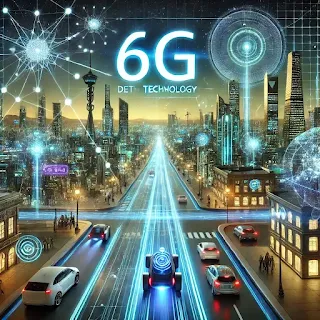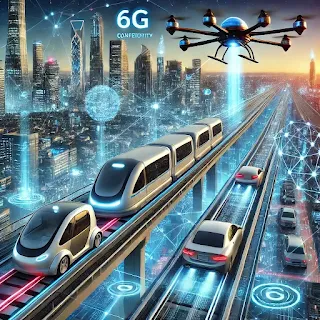The Rise of 6G: How It Will Change the Future of Connectivity
Introduction
With 5G technology still rolling out worldwide, researchers and tech companies have already begun developing 6G networks. Expected to launch around 2030, 6G will revolutionize connectivity by providing ultra-fast speeds, near-zero latency, and AI-driven automation.
This next-generation wireless technology will go beyond smartphones, enabling smart cities, autonomous vehicles, holographic communication, and real-time AI interactions. But how will 6G work, and what impact will it have on our daily lives?
What is 6G?
6G (sixth-generation wireless technology) is the successor to 5G, designed to provide:
- Terahertz (THz) frequencies for ultra-fast data transfer.
- Near-zero latency (less than 1 millisecond response time).
- AI-integrated networks for real-time data processing.
While 5G offers speeds up to 10 Gbps, 6G is expected to reach 100 Gbps to 1 Tbps, enabling a hyper-connected digital world.
How 6G Will Transform Industries
1. AI-Powered Smart Cities
6G networks will support the development of AI-driven smart cities, where everything is connected, including:
- Traffic systems that automatically adjust signals to reduce congestion.
- Energy grids that optimize power distribution using AI.
- Public safety systems that use real-time surveillance and threat detection.
2. Holographic Communication
- With 6G’s ultra-low latency, video calls will evolve into 3D holographic conversations.
- Businesses will conduct virtual meetings with lifelike projections of participants.
3. Healthcare & Remote Surgeries
- Doctors will perform remote surgeries using robotic arms controlled via 6G-powered networks.
- AI-assisted healthcare will analyze medical data in real-time, improving disease detection.
4. Space & Satellite Communications
- 6G satellites will provide global internet coverage, even in remote areas.
- Space missions will benefit from instantaneous communication between Earth and spacecraft.
Key Technologies Behind 6G
1. Terahertz (THz) Frequencies
6G will use THz waves (0.1–10 THz), enabling 100x faster speeds than 5G.
2. AI-Driven Wireless Networks
AI will optimize network traffic, predict failures, and enhance security.
3. Quantum Communication
6G will integrate quantum encryption to ensure unhackable data transmission.
Challenges & Concerns with 6G
1. Infrastructure & Cost
- 6G requires a massive investment in new infrastructure.
- Governments and telecom companies must collaborate to deploy 6G networks worldwide.
2. Security & Privacy Risks
- With ultra-fast data sharing, cybersecurity threats may increase.
- Quantum encryption will be necessary to protect sensitive data.
3. Health & Environmental Concerns
- Research is ongoing to determine the health effects of THz waves.
- Energy-efficient solutions are needed to reduce 6G’s environmental impact.
When Will 6G Be Available?
1. 2025-2027: Research & Development
- Companies like Samsung, Huawei, and Nokia are investing in 6G research.
- Governments are funding projects to explore 6G use cases and standards.
2. 2028-2030: Early Trials & Testing
- Prototype 6G networks will be tested in smart cities and industrial hubs.
3. 2030 & Beyond: Global Rollout
- Commercial 6G networks will be deployed worldwide.
- Early adopters will include businesses, military, and advanced healthcare institutions.
Conclusion
6G will revolutionize connectivity with ultra-fast speeds, AI-powered automation, and groundbreaking applications. While challenges remain, governments, tech companies, and researchers are working towards making 6G a reality by 2030.












0 Comments